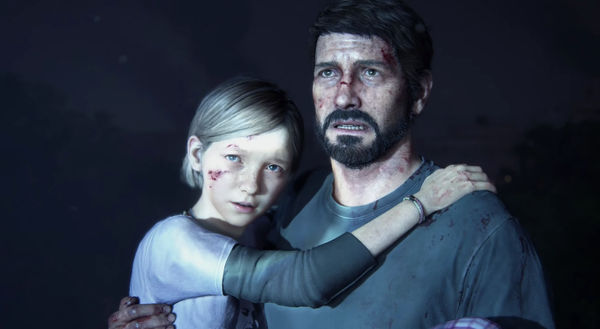
Beyond Pixels: The Growing Power of Emotion in Animated Games
For years, video games were largely defined by their gameplay mechanics, dazzling visuals, and adrenaline-pumping action. While these elements remain crucial, a new wave of animated games is emerging, pushing beyond mere entertainment to deliver deeply emotional experiences that resonate with players on a profound level. By leveraging the unique storytelling potential of animation, developers are crafting narratives that explore complex themes, tackle relatable struggles, and forge unforgettable connections between players and the virtual worlds they inhabit.
This shift towards emotionally resonant storytelling in animated games is fueled by several factors. Firstly, animation offers a level of creative freedom that live-action often struggles to match. With the ability to conjure fantastical environments, design expressive characters, and manipulate visual styles at will, developers can create worlds that perfectly complement the emotional tone of their narratives. This allows for a greater degree of control over the player’s experience, leading to more impactful and memorable moments.
Secondly, animation possesses a unique capacity for conveying subtle emotions and nuances. Through carefully crafted character designs, expressive animations, and nuanced voice acting, developers can communicate a wealth of information about their characters’ inner lives without relying on lengthy exposition. This allows for a more immersive and engaging experience, drawing players deeper into the emotional core of the story.
Finally, the growing maturity of the gaming audience has played a significant role. As players become more discerning and demand more than just superficial entertainment, developers are responding with narratives that explore complex themes like loss, grief, identity, and belonging. These stories, often told through the captivating lens of animation, offer a powerful avenue for exploring the human condition and fostering empathy within players.
The Art of Animated Empathy: Key Techniques
Several key techniques contribute to the success of emotional storytelling in animated games:
-
Character Design: A character’s appearance is the first point of contact with the player. Well-designed characters, even those with stylized or exaggerated features, can evoke immediate feelings of empathy or connection. Think of the wide-eyed innocence of Ness from EarthBound or the weary determination etched onto the face of Lee Everett in The Walking Dead: The Game. These visual cues instantly communicate aspects of their personality and emotional state, inviting players to invest in their journeys.
-
Animation and Body Language: Animation breathes life into these characters, allowing them to express a range of emotions through subtle gestures and nuanced movements. A slumped posture can convey sadness, a clenched fist can signify anger, and a hesitant glance can reveal insecurity. These non-verbal cues are crucial for conveying the emotional subtext of a scene, adding depth and complexity to the narrative. The expressive animation of Hollow Knight‘s Knight, despite its minimalistic design, masterfully conveys a sense of determination and quiet strength.
-
Voice Acting and Sound Design: The voice acting and sound design play a crucial role in amplifying the emotional impact of a scene. A well-delivered line, imbued with genuine emotion, can bring a character to life and forge a powerful connection with the player. Similarly, the use of music and sound effects can create a specific atmosphere, heightening the emotional tension or offering moments of catharsis. The haunting melodies and poignant voice acting in Ori and the Blind Forest are prime examples of how audio can elevate an emotional experience.
-
Narrative Structure and Pacing: The way a story is structured and paced can significantly influence its emotional impact. Slowing down the pace during moments of grief or reflection allows players to fully absorb the emotional weight of the scene. Conversely, ramping up the tension during moments of conflict can heighten the sense of urgency and stakes. The masterful pacing of Life is Strange allows players to connect with the characters and their struggles on a deeply personal level.
-
Player Agency and Choice: Games offer a unique opportunity to engage players actively in the narrative through choices and consequences. Allowing players to make decisions that impact the characters and the story can create a sense of ownership and investment, amplifying the emotional impact of the experience. The moral dilemmas presented in Undertale, where players can choose to show mercy or resort to violence, force them to confront their own values and motivations, leading to a deeply personal and emotional journey.
Examples of Emotionally Resonant Animated Games
Numerous animated games have successfully harnessed these techniques to create emotionally compelling experiences:
-
Gris: This visually stunning platformer follows a young woman named Gris as she navigates her grief and loss. The game’s minimalist narrative, coupled with its breathtaking art style and evocative soundtrack, creates a deeply personal and introspective experience that resonates with players on a profound level. The gradual restoration of color to the world reflects Gris’s journey towards healing and acceptance.
-
Night in the Woods: This narrative-driven adventure game explores themes of mental health, economic hardship, and the struggles of young adulthood. The game’s relatable characters, witty dialogue, and charming art style create a sense of intimacy and authenticity, allowing players to connect with the characters on a deeply personal level. The game’s portrayal of small-town life and the anxieties of post-graduation life is particularly poignant.
-
Celeste: This challenging platformer tells the story of Madeline, a young woman who embarks on a journey to climb Celeste Mountain. The game’s themes of anxiety, depression, and self-doubt are explored with sensitivity and nuance, making it a relatable and empowering experience for players struggling with similar issues. The game’s tight gameplay mechanics and rewarding progression system provide a sense of accomplishment and resilience.
-
Spiritfarer: This cozy management sim explores themes of death, grief, and acceptance. Players take on the role of Stella, a ferrymaster who guides spirits to the afterlife. The game’s charming art style, heartwarming characters, and poignant narrative create a deeply emotional and cathartic experience. The act of caring for and saying goodbye to the spirits under Stella’s care is a powerful and moving experience.
-
Cuphead: While known for its challenging gameplay and stunning 1930s cartoon aesthetic, Cuphead also possesses an underlying emotional core. The desperation of Cuphead and Mugman to rectify their mistake, their unwavering loyalty to each other, and the ultimate redemption they achieve resonate with players on a deeper level than initially apparent. The game’s vibrant visuals and catchy soundtrack belie the underlying themes of responsibility and forgiveness.
The Future of Emotion in Animated Games
The trend of emotionally resonant storytelling in animated games is likely to continue to grow in the future. As technology advances, developers will have access to even more powerful tools for creating expressive characters, immersive environments, and nuanced narratives. We can expect to see more games that explore complex themes, tackle relatable struggles, and forge unforgettable connections between players and the virtual worlds they inhabit.
Furthermore, the increasing popularity of indie games is likely to fuel this trend. Indie developers often have more creative freedom and are more willing to take risks, leading to more innovative and emotionally driven experiences. These games often explore niche themes and cater to specific audiences, creating a more diverse and inclusive landscape for emotional storytelling in games.
Ultimately, the future of animated games lies in their ability to connect with players on a human level. By embracing the power of emotion, developers can create experiences that are not only entertaining but also meaningful and impactful, leaving a lasting impression on players long after they put down the controller. As games continue to evolve as an art form, the power of emotional storytelling will undoubtedly play a central role in shaping the future of interactive entertainment. The ability to evoke empathy, provoke thought, and provide solace through the medium of animated games is a testament to the power of storytelling and the potential of this ever-evolving art form.

